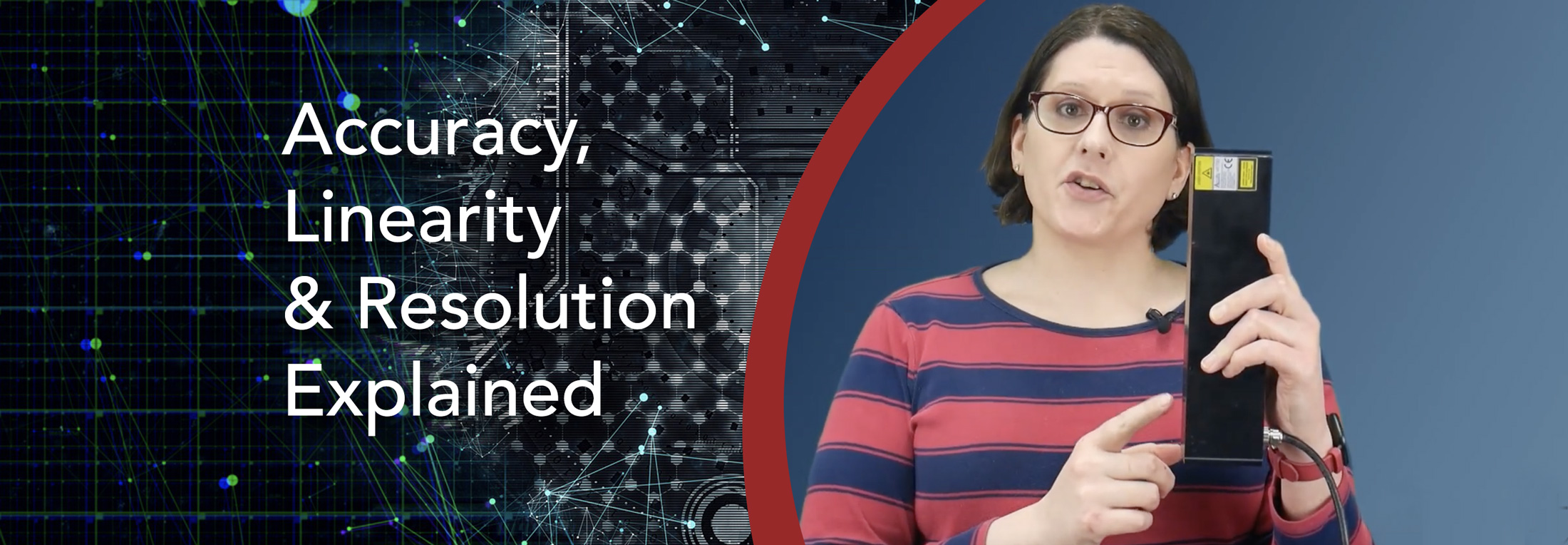Accuracy, Linearity and Resolution Explained
Why Resolution is NOT Accuracy
The Acuity AR700 is one of the most accurate distance measurement laser sensors on the market, but how accurate is it? How can you tell?
If you look at the data sheet for the AR700, there is no “accuracy” spec, just linearity and resolution. Let me tell you a dirty little secret about laser sensor data sheets: resolution isn’t very useful. It’s just there because it looks better.
Resolution is simply ”the smallest possible change in distance value that the sensor can output.” It doesn’t say anything about accuracy.
Let me give you an example: take your typical super cheap stopwatch. The stopwatch manual says that it has a resolution of 1/100th of a second. It definitely can display 1/100th of a second.
But if you try to stop this stopwatch right at one second, you’ll notice something odd: you can get 0.97 seconds, 1 second even, and 1.03 seconds, but you’ll never get 0.98, 0.99, 1.01, or 1.02 seconds no matter how many times you try.
So while the resolution of this watch may be 1/100th of a second, it’s definitely not accurate to 1/100th of a second.
Now if you don’t live and breathe measurement sensors like I do, you can be forgiven for not knowing what linearity is. Linearity technically is “the maximum difference between measurement points and a linear regression line.” But since distance measurement is linear (two inches is two times one inch, and three inches is three times one inch, and so on) the linearity error is a way of describing the worst case distance error of the sensor.
So linearity = accuracy? Then well yes! Kind of. Let me tell you another dirty little secret of the laser sensor data sheets: the sensors are tested with near optimal targets.
The AR700 is a triangulation laser sensor. It shines a laser beam from the laser diode, then a detector looks for the spot the beam makes on the target. The location of the spot is used to triangulate the distance. Simple enough.
Here’s the thing: the less light that makes it back to the detector, the less accurate the measurement might be. At Acuity, when we calibrate your sensor, we use a target such as a matte white paper sticker. Some other companies use more fancy targets that are easier to detect, but we take pride that our specifications are realistic.
Even so, we can’t test every potential target. If your target is darker or shinier than a sheet of paper, you may not get as good of a reading. That’s why our pool of ready-to-go demo units are so important. You often don’t know exactly how accurate a sensor will be in your application until you try it out.
So linearity isn’t the accuracy, full stop. It’s a measurement of the accuracy in certain conditions that allows you to compare laser sensors from the same company. And for the most part, sensors from other companies as well.
With all that said, why quote resolution at all? Besides the fact that every other manufacturer does (and not every customer will watch this video before making their decision), there is some use for it. There are certain techniques, such as, averaging measurements, or measuring within a smaller window of the range, that may allow you to do a little better than the linearity in very specific circumstances.
But the resolution is a hard boundary. No matter what mystical measurement Voodoo that you do so well, it’s simply not possible to do better than the resolution.
To learn more about how we can help with your measurement challenges, please contact the team at Acuity Laser.



